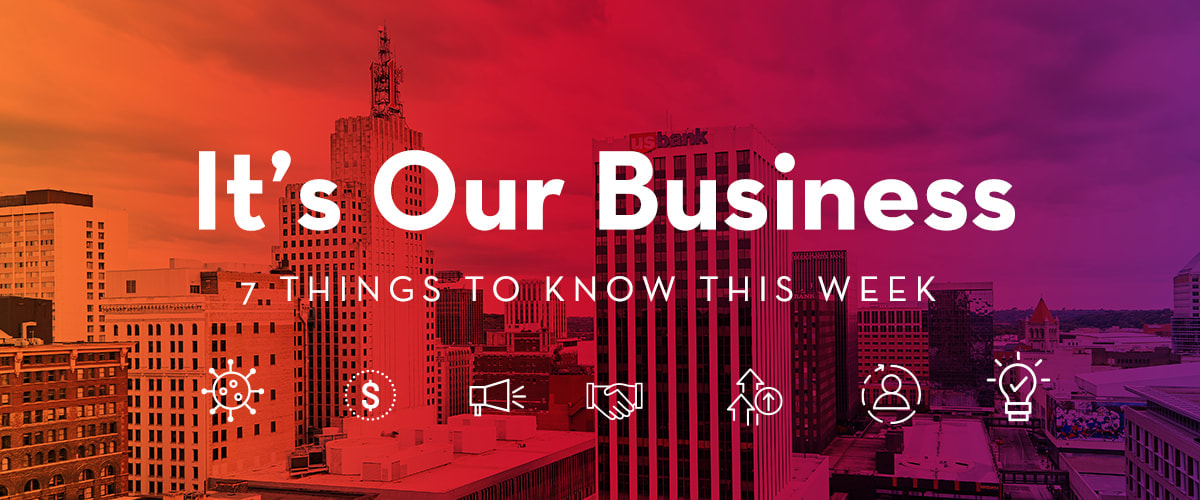|
We were delighted to host Minneapolis Fed Chair, Neel Kashkari, to our January Lunch With Leaders event this past Wednesday. I have paid special attention to the Fed these last 18 months, tracking the markets and inflation – and monetary policy – as we adapt to the changing face of this pandemic. As always, I find Kashkari both personable and eloquent, as he talked about the balancing work constantly underway at the Fed. I’m sharing some highlights that I found particularly relevant: “The basic job of the Fed is to manage the ups and downs in the US economy to try to achieve stable overall economic growth.” We have dual mandate: 1) stable prices, typically 2% inflation year over year; 2) maximum employment. They are linked like a seesaw. As the economy heats up and businesses compete for workers, traditionally this leads to unemployment rate going down, wages going up. Those, then, lead to prices increases and inflation. Fed raises interest rates to keep the seesaw in balance. Pre-pandemic, we saw very low unemployment, we did not see wages increasing significantly, and inflation remained very low. That in itself actually was unique. So the economy was in a very good place pre-COVID. Then we experienced an unprecedented shock to the economy. Recovery has begun, but it is uneven – within the service industry in particular. In the meantime, people have shifted spending towards goods. So this last year we saw big inflation and excess demand for goods. This translated to supply chain disruptions… part due to COVID, part due to this excess demand. Right now, we are seeing very high inflation, higher than expected and longer than expected. The key question: how long will it last? On the demand side, we know how much Congress has allocated to stimulus. We know that is temporary and now fading. So the boost of excess demand ultimately will go away as well. The question, then, is supply. When do supply chains recover? This is a big area of uncertainty: when will workers return? Nationally we are at 3.9% unemployment, and yet we still are 4-5M jobs short of where we should be without the pandemic. Where are the workers and what will it take to get them to come back to work? 6-9 mths ago I focused on generous unemployment benefits – now expired. Did not translate to a meaningful uptick in employment. Schools were closed – now far more reopened compared to last Spring. Again, did not significantly impact the labor market. Clearly, lots of certainty continues. So the timeline of supply side normalizing remains uncertain. Informally, companies are guessing: “not in 2022, maybe in 2023.” When we look at financial market indicators: there is long term confidence is that inflation will settle down. But we still have to watch the data. Kashkari’s most interesting comments, for me, were on interest rates and how the Fed uses them: The housing market is one of the primary channels through which monetary policy affects the economy. If we move the federal fund rate up, long term rates typically go up with that. That essentially “cools down” the housing market somewhat. We have a lot of effect on that. We have signaled we will stop our quantitative easing program, rate increases are likely in the horizon, but mortgage interest rates are still at quite low levels. A key factor: what interest rate is “neutral” for the current economy? That neutral rate changes over time and has been declining over the last 20-30 years to very low levels. “We try to estimate where that neutral rate is, and then we decide whether we want to provide some boost to the economy, then we’ll go below neutral to provide stimulus. Or, if we want to tap the brakes, we would raise interest rates above neutral.” We’re not likely to return to interest rates seen 20-30 years ago, because today’s “neutral” is so different. Mortgage interest rates should remain fairly attractive for the foreseeable future. My takeaways from our conversation: expect interest rates to go up in 2022, perhaps 2 adjustments this year. Long term indications are good that the underlying fundamentals of the economy will right the ship, as it were. But 2022 will continue to be a year of readjusting – particularly in the workforce. One more note from the Fed: the next quarterly business survey from the Minneapolis Fed will be conducted from Monday, January 17 to Monday, January 24. Please take this 5-minute survey to help the Minneapolis Fed and President Neel Kashkari better understand effects on your firm. With other business voices from across the Ninth District, your input will help the Federal Reserve System shape monetary policy to help businesses thrive. If you get this survey from multiple sources, please respond to the survey only once. See you in the trenches. B
Federal:
State:
Regional
Read more updates in our weekly Chamber Advocacy Update.
0 Comments
Leave a Reply. |
Archives
July 2024
|
|
Address:
401 Robert St. N., Suite 150 St. Paul, MN 55101 |
Office Lobby Hours:
Monday: Closed Tuesday: 9AM–4PM Wednesday: 9AM–4PM Thursday: 9AM–4PM Friday: Closed |
Get weekly news on local businesses, events, offerings and more.
|
|
Board Member Login
|
©2022 St. Paul Area Chamber. All Rights Reserved.
|








